Vendredi, 31 octobre 2008
Traduction: [ Google | Babelfish ]
Catégories : [ Bière/Carlow ]
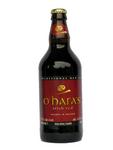
“a traditional hop flavour to balance the sweet malty caramel finish”
Smells a bit like beef stock. Quite bitter, slightly flowery. Made of barley
malt and wheat.
Carlow Brewing Company, Carlow, Ireland. 4.3% alcohol.
[ Posté le 31 octobre 2008 à 19:38 |
1
commentaire |
lien permanent ]
Adresse de trackback
https://weber.fi.eu.org/blog/Biere/Carlow/o_hara_s_irish_red.trackback
Commentaires
O'Hara's Irish Red Nitro
Commentaire N° 1, Blog & White
le 23 octobre 2022 à 10:39
Jeudi, 30 octobre 2008
Catégories : [ Science ]

Jyväskylä se situe à 62.22°N, 25.73°E. Le graphique ci-contre représente la
durée du jour en 2008 en fonction de la date (du 1er janvier au 31 décembre).
Le défaut aux alentours de l'équinoxe est probablement dû à une problème
d'arrondi et au fait que les calculs prennent l'équinoxe pour point de départ.
Je ne m'attendais pas à ce que la courble soit aussi linéaire à distance des
solstices, ni qu'elle soit aussi « pointue » aux solstices.

Ici, les heures de lever et de coucher du soleil. Le décalage fin mars et fin
octobre sont dûs au passage à l'heure d'été et au retour à l'heure d'hiver.

Beaucoup plus étrange ici, le midi solaire (mi-chemin entre le lever et
coucher du soleil) n'est pas à un intervalle de temps constant du midi civil
comme on pourrait s'y attendre. Encore plus étrange, cette courbe a deux
maxima et deux minima qui ne sont pas au même niveau et qui ne correspondent
pas à des dates clés. Les points d'inflexion, en revanche, semblent situés aux
solstices et aux équinoxes.

Ici la même courbe sans le passage à l'heure d'été pour davantage de
lisibilité. La forme en « escalier » de la courbe est dûe à la précision des
valeurs calculées, qui est limitée à la minute. On remarque en particulier que
le décalage entre les midis solaire et civil varie entre 0 et 32 minutes, avec
un décalage moyen d'environ 18 minutes lus sur le graphe (17 minutes par
calcul si on considère le décalage en longitude entre Jyväskylä et le centre
du fuseau horaire à 30.00°E).
[ Posté le 30 octobre 2008 à 23:42 |
pas de
commentaire |
lien permanent ]
Adresse de trackback
https://weber.fi.eu.org/blog/Science/heure_solaire.trackback
Commentaires
Aucun commentaire
Mercredi, 29 octobre 2008
Catégories : [ Cuisine/Chocolats ]
Green & Black's
Organic dark chocolate, Trinitario: frais, légèrement acide
Anthon Berg
Rich Dark, Ghana, 72%: crémeux, noix de coco
Anthon Berg
Soft Dark, Ghana, 57%: doux, fleuri
[ Posté le 29 octobre 2008 à 23:01 |
pas de
commentaire |
lien permanent ]
Adresse de trackback
https://weber.fi.eu.org/blog/Cuisine/Chocolats/chocolats_8.trackback
Commentaires
Aucun commentaire
Mardi, 28 octobre 2008
Catégories : [ Thé ]
Thé vert, grandes feuilles torsadées. Les feuilles sèches on un parfum fruité
(abricot sec) et peut-être un peu grillé. L'infusion est plus verte, assez
douce et peut-être un peu fruitée (abricot sec encore une fois).
[ Posté le 28 octobre 2008 à 10:13 |
pas de
commentaire |
lien permanent ]
Adresse de trackback
https://weber.fi.eu.org/blog/The/liu_an_gua_pian.trackback
Commentaires
Aucun commentaire
Lundi, 27 octobre 2008
Traduction: [ Google | Babelfish ]
Catégories : [ Informatique ]
I just tested Synergy. This little tool
allows to share one keyboard and mouse between several computers sitting next
to each other (that is, each computer needs to have its own display) over the
network. When the mouse cursor reaches the edge of the screen, it moves to the
screen of the computer next to that edge (and the keyboard's focus too, of
course). The great thing is that it works in Linux (and other Unices), in
MacOS X and in Windows. So it's perfectly possible to have a mix of all these
types of systems, and it woks seamlessly, without any extra hardware.
[ Posté le 27 octobre 2008 à 22:47 |
pas de
commentaire |
lien permanent ]
Adresse de trackback
https://weber.fi.eu.org/blog/Informatique/synergy.trackback
Commentaires
Aucun commentaire
Samedi, 25 octobre 2008
Catégories : [ Science ]
J'ai reçu aujourd'hui (enfin hier, vu l'heure qu'il est) la carte
topographique au 1/20 000è de Jyväskylä que j'avais commandée mercredi soir.
Service rapide !
Voici donc deux courbes de niveau pour un trajet Hinkalo — Agora, en voiture
et à vélo (les chemins parcourus sont totalement différents). Le dénivelé
total est de 93 m.
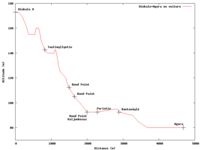
Le trajet en voiture est long de 4680 m. Du point de départ au rond point de
Keljonkeskus situé entre les deux supermarchés, le dénivelé est de 80,5 m pour
une distance parcourue de 2000 m, ce qui fait une déclivité moyenne de 4%, mais
avec des pointes à 14% sur Tuulimyllyntie et 13% sur Myllyjärventie.

Le trajet en vélo est long de 3380 m. Du point de départ jusqu'au petit
tunnel, la déclivité moyenne est de 5,7%, mais avec peu de variation sur ces
1100 m de trajet.
[ Posté le 25 octobre 2008 à 00:48 |
pas de
commentaire |
lien permanent ]
Adresse de trackback
https://weber.fi.eu.org/blog/Science/courbes_de_niveau.trackback
Commentaires
Aucun commentaire
Mercredi, 22 octobre 2008
Traduction: [ Google | Babelfish ]
Catégories : [ Informatique ]
This is the follow-up to the previous
episode.
Today's discussion with Ville was concluded more or less like that: he claimed
that having access to the source code is of no use for him although he can
code, because he has never been able to gather the necessary energy to start
hacking an existing software. Well, that's his problem, isn't it? I devote
some of my free time to hack software (in a very insignificant way, I'm sure)
to adapt it to my needs, he devotes his to something else. And I enjoy my
small software hacks. I'm proud of myself when I manage to understand
MPlayer's subtitles code and add support for DVB subtitles, or when I add
support for X11's screensaver protocol to perl's X11::Protocol module. And
let's be honest: LATEX is ridiculously complicated, but
I enjoy fighting the beast and bending it to my will.
I have loads of fun doing things myself. I make my own pizzas from scratch
(dough and tomato sauce, altough I don't grow the tomatoes, olives and wheat,
nor do I breed pigs or milk cows), I make my own ice-cream, my own Home
Theater PC, my own blog engine, my own Carcassonne meeples. Buying something
ready-made feels like a waste of money if I can do it myself for a reasonnable
cost in time. I'm not going to devote large amounts of time on large projects
such as writing my own operating sytem, word processor or image manipulation
software, mainly because the time it would cost me compared to the benefit I
would get out of it compared to using the existing tools is not worth it.
Hacking oversized projects don't really interest me, even if they have bugs
and I'd like to fix them. But I very much appreciate that small, one-person
-sized softwares are free for me to hack when I set my mind to it.
The ones who consider the freedom given by free software to be useless are the
ones who are too busy/lazy to take advantage of it and have more money at hand
than time.
[ Posté le 22 octobre 2008 à 23:41 |
9
commentaires |
lien permanent ]
Adresse de trackback
https://weber.fi.eu.org/blog/Informatique/just_for_fun.trackback
Commentaires
Commentaire N° 1, Ville (Mikkeli, Finlande)
le 25 octobre 2008 à 16:52
Commentaire N° 2, Matthieu Weber (Finlande)
le 25 octobre 2008 à 18:35
Commentaire N° 3, Ville (Kuopio, Finlande)
le 26 octobre 2008 à 11:10
Commentaire N° 4, Matthieu Weber (Finlande)
le 26 octobre 2008 à 11:54
Commentaire N° 5, Ville (Kuopio, Finlande)
le 26 octobre 2008 à 12:10
Commentaire N° 6, Matthieu Weber (Finlande)
le 26 octobre 2008 à 13:46
Commentaire N° 7, Ville (Kuopio, Finlande)
le 26 octobre 2008 à 14:10
Commentaire N° 8, Matthieu Weber (Finlande)
le 26 octobre 2008 à 14:19
Commentaire N° 9, Ville (Kuopio, Finlande)
le 26 octobre 2008 à 20:09
Traduction: [ Google | Babelfish ]
Catégories : [ Informatique ]
This is the follow-up to the previous
episode.
So, is free software always better than the other kind? Jonne claimed
that the “freedom” aspect of free software isn't an advantage for him,
because free software is hard to change, and it takes a long time to implement
the new feature you would like to add to it. The alternative would be to send
a bug report or feature request to the developers. But both in free project
and proprietary ones you may reach grumpy developers, who will consider your
request as low priority.
Now the real difference between free and proprietary is that in the case of
free software, you have the right to do it yourself. It may be difficult and
take an enourmous amount of time (such as integrating CMYK in GIMP, which was
not designed orginally to handle anything else than RGB), but it is possible
if you are willing to devote resources (time and/or money) to it. With a
proprietary software, if the developers don't want to implement your feature,
there is no appeal. Jonne's argument was that you can always find a software
(free or not) that does what you want. I claim that this is not always true.
The first example is that when I built my leffakone five years ago, there was
no software running on Linux that supported DVB subtitles and automatic TV
commercial removal. Actually, there was no software that was supporting these
two features at all. So I took the time to implement them myself (and yes,
MPlayer's subtitle code is an horrible mess). The second example is a recent
problem with Python's X11::Protocol module. It had a bug that I managed to
identify thanks to the source code, and I found a way to go around it. I
submitted a bug report, but to this day (over a month later) it has still not
been answered. X11::Protocol was exactly what I needed, but had it been
proprietary, I wouldn't have been able to find a workaround, and would have
needed to settle with a sub-optimal solution, which would not have been doing
exactly what I want.
Jonne also claimed that developers don't need the source code of a software,
but the software should be designed so that it can be extended. Firefox is a
good example: a lot of features can be added as “extensions” and the
developers don't need to access Firefox's source code. But not all software is
designed to be extensible, especially if it is in the (financial) interest of the
publisher to prevent anyone to develop an extension without its blessing. This
means that if the extension you want to develop doesn't follow the publisher's
commercial strategy, you won't be allowed to do it. And again there will be no
appeal. An no, you don't always find another software that does the same
thing and would allow you to develop your extension.
And guess what? Most of the software available nowadays is not extensible.
That is, it's not meant to be easy to extend. If you want to change its
behavior or fix a bug, you have no choice but to dig into the source code. And
even if the software has been designed with extensibility in mind, it doesn't
mean that the data it exports through its extension API contains all the
information you need for your purposes. A good example of this if my blog
engine, Bloxsom. It was designed to be extensible, most of the work is done
by extensions rather than by the software's core. But for implementing
features such as multiple languages and multiple categories, I had to change
the core, because the extension API was not enough. And I don't know any other
blog engine that fits my requirements. But hey, I don't know all the blog
engines in the world, so I may be wrong.
To be continued.
[ Posté le 22 octobre 2008 à 23:14 |
pas de
commentaire |
lien permanent ]
Adresse de trackback
https://weber.fi.eu.org/blog/Informatique/is_free_software_always_better.trackback
Commentaires
Aucun commentaire
Traduction: [ Google | Babelfish ]
Catégories : [ Informatique ]
I started to use free software in 1996 (or was it 97?), with Slackware 3.0.
The first reason why I decided to learn Linux is because Unix systems were the
ones used by real coders. Windows already looked too much like a toy, had
the bad reputation of a shaky house built over the sand of MS-DOS. And also
because it was cool (from a geek's perspective, of course). The reason why I
continued to use free software was that even though free software is free as
in “free speech”, it is also free as in “free beer”. There were software
filling my needs, and I adapted the topic of my free-time projects to what was
available on Linux. For example, I could have continued to play aimlessly with
SoundForge in Windows, but coding an IRC bot in Perl on Linux was more
appealing. It was a creative process, the creation of somethat that acts (if
only by reflex), on the contrary of something you contemplate with more or
less awe (like music or a painting). And also, the IRC bot was working on my
behalf, providing a service.
I had a long discussion with two colleagues the other morning, who claimed
that Free Software is a fad. I didn't agree with them at first, thinking about
the origins of the free software movement, but after reflection I have to
admit that in the last five years it actually has turned into a fad. Not a
passing fad like clothing fashion (although the pointy shoe fashion could have
changed more quickly for my taste), but in the sense of something that a lot
of people use, and who use it because everybody else is also using it. The
reason for this is that free software is free (as in “free beer”) and people
are more often than not choosing something free over something they have to
pay for. The average software user doesn't care whether he has the right to
modify software or not. He's a user, not a developer, and he doesn't know how
to use this right. I guess plenty of users still use warez software or free
(as in “beer”) proprietary software instead of free software, because warez
doesn't cost more than free software (at lease from the point of view of
money). In some cases, one free (as in “speech”) software can drive the fad.
This is the case of Firefox I guess, which was in its time technically
superior to Internet Explorer (it respected the standards of the Web and had
popup and ad blockers). And I wouldn't be surprised that Firefox has been the
main driving force behind the free software fad.
To be continued.
[ Posté le 22 octobre 2008 à 22:32 |
pas de
commentaire |
lien permanent ]
Adresse de trackback
https://weber.fi.eu.org/blog/Informatique/free_software_is_a_fad.trackback
Commentaires
Aucun commentaire
Mardi, 21 octobre 2008
Catégories : [ Science ]
Suite de l'épisode précédent.
J'ai passé aujourd'hui un certain temps à discuter de mécanique auto avec
Henrik et en particulier de la consommation rélle d'une voiture. On a fini par
en revenir au problème de trouver la courbe de consommation spécifique des
moteurs de nos voiture, mais il semble que les constructeurs tiennent à
garder ces informations secrètes… En revanche, Henrik a trouvé un
article en allemand de
Helmut Tschöke et Hanns-Erhard Heinze publié dans le Magdeburger
Wisseschaftsjournal de 2001 qui compare les consommations de divers types de
moteurs (essence, essence à injection directe, diesel à injection directe pour
voitures personnelles et les véhicules utilitaires).
Les auteurs indiquent entre autres qu'étant données les masses volumiques et
les densités énergétiques différentes entre l'essence et le diesel, à
consommations énergétiques égales, le moteur diesel a une consommation
moyenne inférieure. Cependant le diesel produit davantage de CO2
que l'essence, à consommations égales. Mais les consommations moyennes des
voitures à essence et diesel ne sont justement pas égales.
Un peu plus loin, ils se demandent s'il est possible de construire une voiture
qui consomme seulement 1 ou 2 L/100 km (la Volkswagen Lupo 3L a été conçue
pour ne consommer que 3 L/100 km en moyenne) et concluent que ce n'est pas
possible, mais qu'on pourrait descendre à 2 ou 2,3 L/100 km.
Les auteurs introduisent finalement la notion de facteur de mobilité (FM),
égal au produit de la consommation par le temps nécessaire à la parcourir
divisé par le nombre de personnes transportées. Sur un trajet de 300 km, le
piéton a un FM de 30, le vélo 7, la voiture 7,8, le car 1,4, le train 1,6 et
l'avion 5,5 (le piéton consomme l'équivalent de 0,5 L/100 km et le vélo 0,35).
Ma voiture a un FM de 6,1 avec 4 passagers et 8,1 avec 3
passagers.
[ Posté le 21 octobre 2008 à 22:39 |
pas de
commentaire |
lien permanent ]
Adresse de trackback
https://weber.fi.eu.org/blog/Science/consommation_d_une_voiture_2.trackback
Commentaires
Aucun commentaire
Catégories : [ Thé ]
Thé vert, uniquement fait de petites feuilles courtes (bourgeons?). Les
feuilles sèches ont une odeur qui me rappelle le chocolat noir 72% de
Kalev. La première infusion est orange
pâle et a un goût de riz soufflé. Après, c'est plus flou.
[ Posté le 21 octobre 2008 à 10:27 |
pas de
commentaire |
lien permanent ]
Adresse de trackback
https://weber.fi.eu.org/blog/The/wu_zi_xian_hao.trackback
Commentaires
Aucun commentaire
Dimanche, 19 octobre 2008
Traduction: [ Google | Babelfish ]
Catégories : [ TV/Cinéma ]

© Play.com
A 2-parter, TV adaptation of Pratchett's Hogfather novel. See
Wikipedia for
details.
[ Posté le 19 octobre 2008 à 23:24 |
1
commentaire |
lien permanent ]
Adresse de trackback
https://weber.fi.eu.org/blog/TV/Cinema/hogfather.trackback
Commentaires
Mercredi, 15 octobre 2008
Traduction: [ Google | Babelfish ]
Catégories : [ Informatique ]
FOAF means Friend of a Friend. It's an RDF
vocabulary that allows to describe oneself and
link to people one knows. In other words, it forms a distributed social
network, independant from any service provider such as Facebook, LinkedIn,
Orkut and so on. It doesn't allow you to send messages to other people in your
network, or any of the activities that are often associated with social networks,
it only describes you and your relations to the people you know.
Here's my FOAF descriptor, that you
can also view through FOAFer.
There's also FOAF-a-Matic, a simple web tool
that creates a basic FOAF descriptor for you (a more advanced descriptor will
required to write RDF by hand, though). Finally, there is also a FOAF
Generator
that creates a FOAF descriptor based on your Facebook profile.
So if you feel geeky enough to get your own FOAF descriptor and if you know
me, let me know about it :)
[ Posté le 15 octobre 2008 à 15:43 |
pas de
commentaire |
lien permanent ]
Adresse de trackback
https://weber.fi.eu.org/blog/Informatique/foaf.trackback
Commentaires
Aucun commentaire
Catégories : [ Cuisine/Glace ]
Recette adaptée de la glace au lait
de Chef Simon.
Ingrédients
- 5dL lait
- 4 jaunes d'½ufs
- 70g sucre
- 30g sirop de glucose en poudre
- 10g fécule d'orge
- 100g pâte de pistache
- 2dL crème fraîche
Préparation
Mélanger les 4 jaunes d'½fs avec le sucre, et faire chauffer le lait avec le
sirop de glucose. Verser le lait chaud sur les ½ufs. Mélanger, reverser dans
la casserolle du lait et faire épaissir. Délayer la fécule dans un peu d'eau
froide et verser dans le mélange encore chuad tout en mélangeant à la cuillère
en bois. Laisser refroidir. Délayer la pâte de pistache dans un peu de cette
préparation, afin d'obtenir un mélange fluide. Verser dans le reste de la
préparation et mélanger. Laisser refroidir au réfrigérateur. Passer à la
sorbetière. Fouetter la crème fraîche et l'ajouter à la préparation lorsque
cette dernière est déja bien prise. Laisser la sorbetière mélanger le tout
encore un peu.
Commentaires
- Pas de grumeaux cette fois-ci. Merci Carine pour m'avoir rappelé qu'il vaut
mieux délayer la fécule plutôt que de la verser en poudre dans la crème
anglaise (c'est la faute à Chef Simon, dans sa recette il l'utilise sans la
délayer).
- La crème fouettée devrait donner une consistance plus mousseuse à la glace.
On verra demain comment si ça a fonctionné comme prévu.
- EDIT: la glace est un peu dure, mais ce n'est quand même pas un glaçon.
[ Posté le 15 octobre 2008 à 00:54 |
pas de
commentaire |
lien permanent ]
Adresse de trackback
https://weber.fi.eu.org/blog/Cuisine/Glace/glace_a_la_pistache.trackback
Commentaires
Aucun commentaire
Catégories : [ Cuisine/Glace ]
Recette adaptée de la glace au lait
de Chef Simon.
Ingrédients
- 5dL lait
- 4 ½ufs
- 70g sucre
- 30g sirop de glucose en poudre
- 10g fécule d'orge
- 1 baton de cannelle
- cannelle en poudre
Préparation
Mélanger les 4 ½fs avec le sucre, et faire chauffer le lait avec le sirop de
glucose et le baton de cannelle. J'ai laissé bouillir doucement pendant 5 – 10
minutes. Sortir le baton de cannelle et verser le lait chaud sur les ½ufs.
Mélanger, reverser dans la casserolle du lait et faire épaissir. Ajouter
ensuite la fécule peu à peu tout en mélangeant au fouet. Laisser refroidir.
Ajouter de la cannelle en poudre tout en mélangeant au fouet, selon goût.
Passer à la sorbetière.
Commentaires
- Ma crème avait des grumeaux (avant d'y ajouter la fécule). Je ne sais pas
s'ils proviennent du blanc d'½uf (on utilise normalement 6 jaunes pour la
crème anglaise, mais Ginette Mathiot prétend qu'on peut aussi la faire avec 4
½ufs entiers) ou simplement du fait que j'ai cuit trop fort (mais quand la
plaque est sur 3 ça n'a pas l'air de vouloir épaissir, et sur 4 ça chauffe
trop). J'ai passé la crème à la passoire, qui a retenu une bonne cuillère à
soupe de globules (blanc d'½uf ? fécule ? les deux ?)
- EDIT: La glace est devenue dure au congélateur. Je suppose que les globules
contenaient toute la fécule. Et donc le sirop de glucose ne participe pas
beucoup (voire pas du tout) à la molesse de la glace.
[ Posté le 15 octobre 2008 à 00:54 |
pas de
commentaire |
lien permanent ]
Adresse de trackback
https://weber.fi.eu.org/blog/Cuisine/Glace/glace_a_la_cannelle.trackback
Commentaires
Aucun commentaire
Dimanche, 12 octobre 2008
Traduction: [ Google | Babelfish ]
Catégories : [ Bière/Belhaven ]
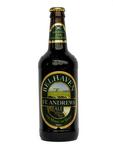
“It is every golfers dream to play The Old Course… Created entirely by the
forces of nature, the historic links of St. Andrews are believed to be where
the first ever game was played.”
Just another ale, slightly fruity maybe. Contains malted barley.
The Belhaven Brewery, Dunbar, Scotland. 4.6% alcohol.
[ Posté le 12 octobre 2008 à 00:20 |
pas de
commentaire |
lien permanent ]
Adresse de trackback
https://weber.fi.eu.org/blog/Biere/Belhaven/st_andrew_s_ale.trackback
Commentaires
Aucun commentaire
Vendredi, 10 octobre 2008
Traduction: [ Google | Babelfish ]
Catégories : [ Science ]

I've been thinking how to automatise the process of setting the car engine's heating
time in the morning depending on the outside temperature. Since heating is not overly expensive,
I've decided that a cheap timer switch should do the trick. As to how long
the engine should be heated… Well, statistics may help here. The graphs on
the left represents the average temperature in the morning at 6 and at 8 over
the past 6 years (2002 – 2008). From the graph, it's easy to see that there are
clear periods where the temperature is between this and that limit.

In a nutshell and in month-day format:
- 01-01 – 03-01: 2 hours
- 03-01 – 03-25: 1 hour
- 03-25 – 05-01: 30 minutes
- 05-01 – 10-01: no heating
- 10-01 – 12-15: 30 minutes
- 12-15 – 12-31: 1 hour
This represents 214 hours of heating in the year, amounting to 6.90 EUR (with
a 400 W heater, and a rate of 0.08 EUR/kWh). With the additional inside
heater (add 950 W), it costs 23.30 EUR. This is almost 40% more expensive than
the optimised calculation in the previous article, but a device combining
termperature sensor with a clock is hard to find and will cost 50 to 100 EUR,
when a mechanical clock switch can be found for 5 EUR.
[ Posté le 10 octobre 2008 à 23:55 |
1
commentaire |
lien permanent ]
Adresse de trackback
https://weber.fi.eu.org/blog/Science/morning_temperature_at_8.trackback
Commentaires
Warm up times for Defa's timer
Commentaire N° 1, Henrik (Jyväskylä, Finlande)
le 13 octobre 2008 à 12:20
Traduction: [ Google | Babelfish ]
Catégories : [ Bière/FAVORITES | Bière/Highgate ]
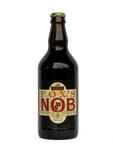
“Local folklore tells of a fox that lived in and around the old Hightgate
and Walsall Brewery. Althought frequent sightings of the fox were recorded no
one ever caught more than a glimpse of the animal's head as he darted amongst
the barrels. The old English word for head is Nob and this beer is named after
that elusive fox.”
Quite bitter with a distinct nutty flavour, especially of bitter almond.
Contains malted barley.
Highgate Brewery, Walsall, England. 4.0% alcohol.
[ Posté le 10 octobre 2008 à 22:02 |
pas de
commentaire |
lien permanent ]
Adresse de trackback
https://weber.fi.eu.org/blog/Biere/Highgate/fox_s_nob.trackback
Commentaires
Aucun commentaire
Catégories : [ Livres/Naheulbeuk ]

© Amazon.fr
Les héros du donjon de Naheulbeuk sont contactés par Tulgar Iajnek, un
fonctionnaire de la caisse des donjons qui leur apprend que bien qu'ils aient
livré la douzième statuette de Gladeulfeurha au mage Gontran Théogal,
celui-ci s'est fait dérober une autre des statuettes, l'empêchant ainsi de
procéder au rituel qui permettra le retour du Dlul et enfermera la Terre de
Fangh dans la Couette de l'oubli. Les aventuriers se rendent alors au donjon
de Théogal, mais ils sont précédés par tous les aventuriers de la Terre de
Fangh qui tentent eux aussi de retrouver la statuette. Iajnek leur fait
comprendre qu'ils ne trouveront rien dans le donjon (dans lequel les autres
compagnies d'aventuriers se font allègrement massacrer), que Théogal l'a
quitté depuis belle lurette et qu'ils doivent partir à Glargh, où ils auront
plus de chances de trouver des informations sur l'endroit où se cache le mage.
Ils se font donc engager comme mercenaires sur une barge afin de la défendre
contre les brigands et de voyager rapidement jusqu'à la grande cité. Ils
rencontrent effectivement des brigands qu'ils parviennent à repousser par
miracle et par hasard, et remarquent que les bords du fleuve sont plein de
cultistes qui s'entre-massacrent. Arrivé à Glargh ils apprennent que tous les
cultes (sauf celui de Dlul) tentent de les arrêter, croyant que ce sont eux
qui cherchent à provoquer le retour de Dlul. Ils parviennent finalement à
apprendre que Théogal se cache dans le sanctuaire de Swimaf, s'y rendent et se
débarassent finalement du mage. La statuette avait été dérobée par un gnome
des forêts du Nord qui vivait avec le mage et à qui ce dernier voulait couper
une jambe, le rituel nécéssitant un gnome unijambiste, mais le-dit gnome n'y
tenant pas tellement il a donc volé la statuette pour retarder les plans de
Théogal.
[ Posté le 10 octobre 2008 à 20:44 |
pas de
commentaire |
lien permanent ]
Adresse de trackback
https://weber.fi.eu.org/blog/Livres/Naheulbeuk/la_couette_de_l_oubli.trackback
Commentaires
Aucun commentaire
Catégories : [ Science ]
On conseille de chauffer la voiture si la température de l'air descend en
dessous de 5 °C. La durée de chauffage varie en fonction de la température:
- 5 °C à -5 °C: 30 minutes
- -5 °C à -10 °C: 60 minutes
- < -10 °C: 120 minutes
En 2007, la température le matin à 8 heures était:
- < 5 °C et > -5 °C pendant 159 jours
- < -5 °C et > -10 °C pendant 23 jours
- < -10 °C pendant 33 jours
Ceci nous fait 168 heures de chauffage sur l'année (en comptant les
week-ends), donc à 400W de puissance de chauffage et à 0,08 EUR le kWh, ça nous
fait 5 EUR par an. Si on rajoute le chauffage de l'habitacle (950W), on arrive
à 18 EUR par an.
[ Posté le 10 octobre 2008 à 08:13 |
pas de
commentaire |
lien permanent ]
Adresse de trackback
https://weber.fi.eu.org/blog/Science/chauffage_de_la_voiture.trackback
Commentaires
Aucun commentaire
Mardi, 7 octobre 2008
Catégories : [ Cuisine/Glace ]
J'ai passé à la sorbetière environ 500g de yaourt industriel à la fraise.
Après 24h dans le congélateur, la préparation était très dure, et le goût du
yaourt est nettement moins prononcé quand il est gelé (anesthésie de la langue
par le froid ? Molécules odorantes captives de la glace, ou moins mobiles à
cause de la température plus basse ?)
[ Posté le 7 octobre 2008 à 09:36 |
pas de
commentaire |
lien permanent ]
Adresse de trackback
https://weber.fi.eu.org/blog/Cuisine/Glace/yaourt_glace.trackback
Commentaires
Aucun commentaire
Dimanche, 5 octobre 2008
Catégories : [ Cuisine ]
Ingrédients
- 100g pistaches épluchées, non-salées
- 100g sucre glace
- 1 blanc d'½uf
Préparation
Mixer les pistaches avec le sucre jusqu'à obtention d'une poudre fine. Ajouter
le blanc d'½uf et mélanger à la cuillère (le mélange devient trop épais pour
le mixer).
[ Posté le 5 octobre 2008 à 14:00 |
pas de
commentaire |
lien permanent ]
Adresse de trackback
https://weber.fi.eu.org/blog/Cuisine/pate_de_pistaches.trackback
Commentaires
Aucun commentaire
Samedi, 4 octobre 2008
Traduction: [ Google | Babelfish ]
Catégories : [ Bière/Meantime ]
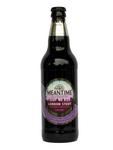
“Stouts and porters were the beers that made London the brewing capital of
the world. When pale ales displaced porters the style lived on in Ireland in
its own distinct form. Meantine London Stout reverts to the original malt only
recipe to recapture the full complexity of this great London beer.”
Just another stout, but a quite good one. Made with barley and wheat.
Meantime Brewing, London, England. 4.5% alcohol.
[ Posté le 4 octobre 2008 à 20:44 |
pas de
commentaire |
lien permanent ]
Adresse de trackback
https://weber.fi.eu.org/blog/Biere/Meantime/meantime_london_stout.trackback
Commentaires
Aucun commentaire
Vendredi, 3 octobre 2008
Catégories : [ Livres/BD/Troy ]

© Amazon.fr
Onzième volume de Trolls de Troy, publié en 2008. Rysta Fuquatou organise
des olympiades pour toutes les races de trolls, dans le but de sélectionner
les meilleurs d'entre eux et de créer une nouvelle race qu'il contrôlera. Il
espère ainsi fabriquer le parfait soldat pour combattre les trolls et s'en
débarasser. Makheureusement pour lui, les trolls font n'importe quoi et
éventent son projet.
[ Posté le 3 octobre 2008 à 23:25 |
pas de
commentaire |
lien permanent ]
Adresse de trackback
https://weber.fi.eu.org/blog/Livres/BD/Troy/trollympiades.trackback
Commentaires
Aucun commentaire
Jeudi, 2 octobre 2008
Catégories : [ Râleries ]
<noursy> qu'est-ce que ça change pour le commun des mortels qu'on
descende du singe ou d'Adam ?
<loupi> ben on saurait s'il faut manger des bananes ou des pommes :)
[ Posté le 2 octobre 2008 à 16:16 |
pas de
commentaire |
lien permanent ]
Adresse de trackback
https://weber.fi.eu.org/blog/Raleries/evolution_et_dessein_intelligent.trackback
Commentaires
Aucun commentaire
Mercredi, 1er octobre 2008
Catégories : [ Livres/RC Wagner ]

© Amazon.fr
Une sonde soviétique a découvert de la vie sur Mars en 1967. Fin 1999, un
ambassadeur martien arrive sur Terre dans un vaisseau soviétique, fausse
compagnie aux officiels et va se réfugier dans une communeauté d'adorateurs du
« Vert » dans le Larzac. Un agent de la DGSE est chargé de le retrouver,
mais ensemble ils se font capturer par le KGB. Ils réussissent à s'évader (le
martien est capable de téléportation, mais seulement quand ça lui chante) et à
traverser l'URSS puis le Japon pour arriver en Californie, qui vient juste de
faire sécession des États-Unis. Échappant aux GIs, ils se téléportent sur
Mars, où des troupes soviétiques (installées depuis plusieurs années)
s'apprêtent à affronter des troupes étatsuniennes (transportées par des
soucoupes volantes appartenant aux « petits gris »). Le but des petits gris
est de changer la réalité en faisant « s'effondrer la fonction d'onde »,
c'est à dire devenir la seule forme de vie intelligente du système solaire
(sauf les humains qui doivent leur servir de garde-manger). Mais la manoeuvre
des petits gris échoue, et l'effondrement de la fonction d'onde fait
apparaître des formes de vies extra-terrestres sur chacune des planètes ou
lunes du système solaire, qui viennent au secours des humains et des martiens.
En fait l'ambsassadeur martien est le seul de son espèce, le reste de ses
congénères ayant préféré se réfugier dans une autre réalité et ne se mêler de
rien.
[ Posté le 1er octobre 2008 à 23:08 |
pas de
commentaire |
lien permanent ]
Adresse de trackback
https://weber.fi.eu.org/blog/Livres/RC_Wagner/lgm.trackback
Commentaires
Aucun commentaire
Traduction: [ Google | Babelfish ]
Catégories : [ TV/Cinéma ]

Wikipedia
Bob Harris, an american actor is in Japan for shooting a commercial. Charlotte
stays at the same hotel as Bob with her husband, who is a photographer and
spends all his time away from his wife, working. Bob and Charlotte start
spending time together since they have plenty of idle time, and end up falling
in love. And then Bob has to go back home. End of story.
[ Posté le 1er octobre 2008 à 11:29 |
pas de
commentaire |
lien permanent ]
Adresse de trackback
https://weber.fi.eu.org/blog/TV/Cinema/lost_in_translation.trackback
Commentaires
Aucun commentaire


















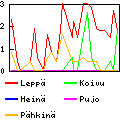





“caramel and mild nutty biscuit”
Apparently the same as the regular Irish Red but with a nitrogen widget in the can. A bit sweet, with a faint smell of beef stock. Not sure about the caramel or the biscuit. Contains barley malt and wheat. ...